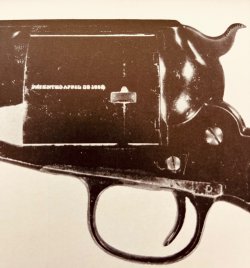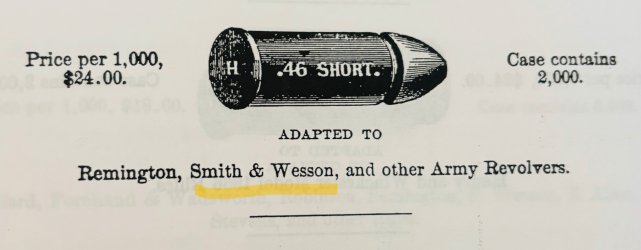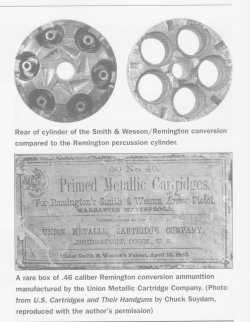Quick history;
In 1867 Remington approached Smith & Wesson with a request to alter their 44 New Model cap&Ball Civil War leftover revolvers to .46 Rimfire cartridge.
Long story short it became a partnership of sorts.
Remington sent thousands to Smith & Wesson to inspect and after completion stamped on the cylinder the Rollin White patent date.
I just read in military records that the U.S. Army issued the Remington Smith and Wesson Army revolver 46rf to Artillery units beginning in 1868 and continuing until 1871.
Those pre-1869 examples apparently actually have the Rollin White patent stamp since the patent did not expire until 1869.
So I'm wondering now if these will letter?
Does the historical department have records on these? Where they were sent? How many? Also if Smith & Wesson was actually involved in the conversion process? Did Smith & Wesson actually number them with conversion numbers?
There is a lot more to this co-partnership that seems to be ignored by collectors and historians for some reason.
These revolvers are often period titled as Smith & Wesson Army revolvers. I'm thinking Smith & Wesson was more involved than we know.
The U.S. Army may have actually sent several to Smith & Wesson for alteration to 46 Rimfire while the Rollin White patent was still active since the Army owned the guns! A lot of these 46 rimfires are actually military inspected.
Murph


In 1867 Remington approached Smith & Wesson with a request to alter their 44 New Model cap&Ball Civil War leftover revolvers to .46 Rimfire cartridge.
Long story short it became a partnership of sorts.
Remington sent thousands to Smith & Wesson to inspect and after completion stamped on the cylinder the Rollin White patent date.
I just read in military records that the U.S. Army issued the Remington Smith and Wesson Army revolver 46rf to Artillery units beginning in 1868 and continuing until 1871.
Those pre-1869 examples apparently actually have the Rollin White patent stamp since the patent did not expire until 1869.
So I'm wondering now if these will letter?
Does the historical department have records on these? Where they were sent? How many? Also if Smith & Wesson was actually involved in the conversion process? Did Smith & Wesson actually number them with conversion numbers?
There is a lot more to this co-partnership that seems to be ignored by collectors and historians for some reason.
These revolvers are often period titled as Smith & Wesson Army revolvers. I'm thinking Smith & Wesson was more involved than we know.
The U.S. Army may have actually sent several to Smith & Wesson for alteration to 46 Rimfire while the Rollin White patent was still active since the Army owned the guns! A lot of these 46 rimfires are actually military inspected.
Murph


Last edited:




